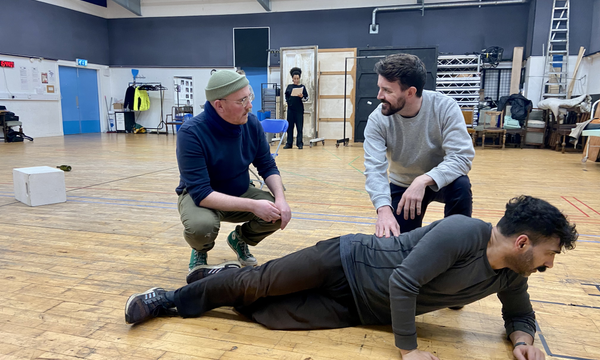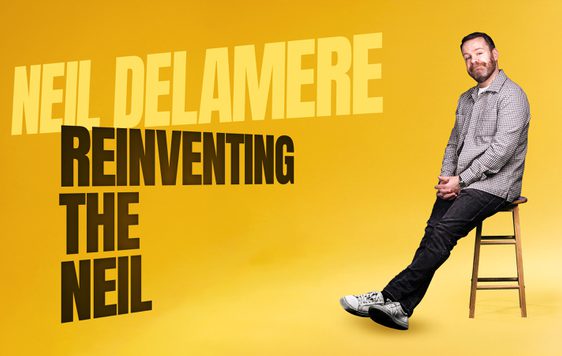News Story
If you have been following this blog for a while you will notice that we haven’t spoken about one of the main departments in the theatre who contribute hugely to our main stage productions. Have no fear...our costume department post is here!
One part of creating our own shows is that we produce all our own costumes at our workshop in Roseburn. Heading up this amazing team is the wonderful Caitlin Weidenhof; I was lucky enough to sit down with her and talk all things costume.
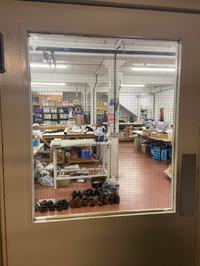
What different jobs are there in the dept and how is the workload spread?
We have the makers who take the cutters patterns and fabric and make the costumes. There is the cutter who realises the costumes, they run the workroom in terms of the workflow of making the costumes through the department to the makers.
Then we have the Wardrobe Supervisor. A supervisor oversees the show logistically and artistically, they work directly with the designer, they do the shopping of fabrics and any costume or shoes etc that we might need, they go out and find the hires that we may need for a show, they pull everything to do with costume together, they organise fittings with the cutter.
The dresser running wardrobe heads up a team of dressers, at the moment we have 2 casual dressers in, they help actors get dressed before the show if there are any technical costumes, they make sure the costumes look right before the audience see them, they are also at the side of the stage helping with quick changes. If it is a small show, they will also oversee the maintenance of the costume but on a bigger show the whole department will help with that.
Then there is me, it’s my job to look at the season, look at the specific show designs and pull it all together to have the best team in place to realise each show individually. We have quite a diverse skill set in costume which helps when we are asked to make weird and wonderful costumes, we all have strengths, and we are able to work together, and problem solve. Each show requires a different makeup of the team.
What is the job of a cutter?
It is to interpretate a designers 2D designs into 3D costumes. It is a mixture between a sculpture and a technical drawer. They help the designer realise their vision.
They would take the design and they would discuss with the designer what they specifically want the costume to look like because a drawing doesn’t always represent how the item will look in real life and how a fabric will fall. They will discuss the drawings and make a pattern, either a flat pattern or on the stand. They then oversee the making of that garment throughout the whole process.
Most designers only draw the front of the design and sometimes in a very fashion illustration way so the cutter has got to change the dimensions of the costume to fit the actor which can make it look different. What questions the cutter asks really depends on how detailed the designers' drawings are, they ask where the seamlines are and extra things that aren’t drawn such as the back or the tiny details that aren’t clear what they are. A cutter normally has a good knowledge of clothing and if it is a period piece, seamlines are always the same and the backs are always the same but when a piece is an imagined time it is designer specific, and references can come from magazines or things they have seen on screen.
It takes a real technical brain to ultimately come up with a pattern from an image, it also has got to be a really detailed pattern that can be read by all members of the department who will be making the costume. Sometimes the fabric can be expensive, and you can’t make an error. Everyone has a different way of drawing a pattern and making a piece of costume so it helps that we have worked as a department for a long time so we know how to read our cutters patterns and we can ask if something isn’t clear.
The cutter will also cut the patterns for the makers to put together. Sometimes we make a mock-up of a garment in calico to check fit and design also whether it’s being lined, we check whether the seams are right, or interfacing is needed etc. The pattern will then be altered before being cut and made. Calico mock-up is also essential if the garment is being made in really expensive fabric, if it is expensive we will only buy enough to make the costume so there is no room for mistakes whereas if it is cheaper we can play around with it while making to get the best outcome.


Why do you have so many different sewing machines in the workshop?
We have domestic machines which are the ones you can go to John Lewis and buy. We have hybrids between domestic and industrial and straight industrial. We generally have industrial ones at each workstation, they are heavier and only tend to do a straight stitch. You wouldn’t put a light, delicate fabric through an industrial machine, you would use domestic for that. Domestic machines are good for buttonholes and zips, but you can use any of them for that too.
We also have 2 overlockers to finish off the seams, these cut and seal the hems like you see in commercial clothing which stops it fraying and damaging the item.
If we can use a machine on a costume we will because it is quicker, but we do, sometimes, hand sew a piece if we don’t want stitching seen or we want it to look a certain way. Sometimes the material can’t fit under a machine if the fabric is too thick, so we have got to sew that by hand. For example, the queens dress in ‘Alice in Wonderland’ was very detailed and everything had to be fixed onto it and the Christmas food costumes from last year had to all be handmade.
But everyone in the department has a favourite machine to work on. Karen, our cutter, prefers the industrial machines as they are faster, so she tends to use them for everything.
What kind of things do you find in your costume workshop that members of the public wouldn’t expect to see?
On tours we always get asked about the bottle of Vodka that we have sitting on the side. This isn’t for when shows get a little stressful – this is to clean costumes between shows if it is too delicate to clean in machines. There are sometimes a lot of shows in a run of performances, not a lot of time between matinee and evening performances, and our costume team have to make sure that the costumes look (and smell!) as good for the last performance as they did for the first. Sometimes actors get very sweaty under all the lights, and a top tip to deal with smelly costumes that can’t be put in the washing machine is to spray them with vodka – the alcohol kills the sweaty bugs!
There is currently a big vat of blood in the workshop for testing out materials in case any of them have got to have the liquid on them in a show. You have to start right from the beginning and get samples of material to test to see if the stain comes out, if it doesn’t come out we have to keep looking.
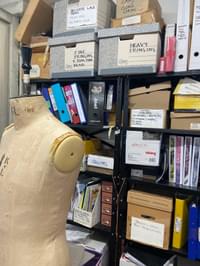
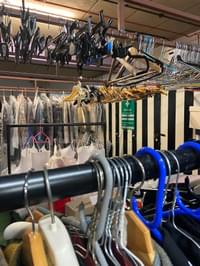
Is every costume in a show made from scratch or do you alter already existing items that we have in store?
Depending on the design, if it is a period piece or an imagined period piece, myself, the wardrobe supervisor and the cutter would look through the designs and see what we could achieve and make with the core team, what we have already and what needs to be hired/found.
We always start with the question; “What has to be made that we won’t be able to find anywhere”, we then look at how long we think that would take to make and that shows us what we need to hire/buy and what we can ask freelancers to make who would have the time to give to that piece. It’s a constant balancing act for the department and workload and timeframe, no two shows are the same.
We want to use as much of what we already have as possible. Costume departments are very green because we like to re-use, we also share costumes between theatres in Scotland. Designers are looking more and more into being green and using costumes theatres already have.
How long do you have to make the costumes for each show? Do you only make one of each costume?
A standard making block for us is 4 weeks, it runs from the start of rehearsals to tech week. How many of each costume we make is dependent on the show and the action that happens within the show. If we are making a suit and the actor is going to be on their knees during the performance we would make another pair as a backup, that might not be until tech week when we see the performance and think about the maintenance of the costume. It also depends on what happens to the costumes in the show, if they have liquid spilt on them or they are going to need a lot of cleaning we make duplicates, or we buy duplicates. For heavy maintenance shows we would make doubles / triples because they are doing multiple shows in a day and there isn’t always time to do a wash between shows.
We don’t usually have time to make doubles of everything, but for instance if there is a really delicate item that will need to be washed, we have multiples in case of damage. The multiples don’t have to be exact replicas, especially if they can be pulled from our store.
We had to make many dresses for the Duchess of Malfi – There had to be her main dress, then one that is broken down after she has been out in the rain and mud. There was also blood that got onto the dress live on stage, so we had multiples as there wasn’t time to wash the stain out between shows. Sometimes we have to make up to 7 duplicates of the same dress.
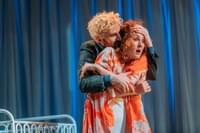
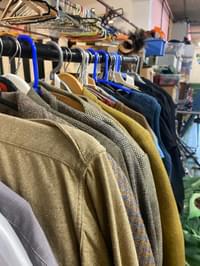
What do you do with the costumes after the show?
If the show is going on tour / there is potential for it to go on tour. We would store it which involves cleaning it, get it all together, label it and store it on a costume rail and cover it so it can just be wheeled out. We can also store it in a travelling wardrobe. If there is no hint of it going on tour, we will clean it and disperse it into its various areas of the store e.g. shirts on the shirt rail, jackets with jackets so that we can easily find it is we need it in the future.
Any advice for someone wanting to work in costume?
Decide if you want to go into design or into production as they are very different. Go and see a lot of theatre if it’s theatre that you are interested in, if you are interested in the screen go and watch lots too – there are some great ‘behind the scenes’ you can watch too to see how the costume department works on a film/tv show.
Go and get experience, see backstage and how a production runs, the more you know the better. Every department works together on a show, so it is beneficial to have lots of knowledge about theatre. If you want to be a maker, get making, get practising. You become very specialised in what you will end up doing but learn it all before you decide.
Favourite and least favourite part of your job?
My favourite thing about my job is working as part of the team. I have worked with these ladies for a long time, and we can play to each other's strengths and see who will make what when a design comes in. We are like a family who make costumes together and we all support each other which makes for a great experience and a better outcome.
I love dying fabrics and painting - I get excited when designs that need that come to me and I can get creative.
What is your favourite costume you have made/group of costumes for a show?
My favourite group of costumes that we have made for the Lyceum has to be the ones we made for Alice in Wonderland. It was such a visually beautiful show, and I loved seeing the colours and fabrics make characters come to life such as the Caterpillar, Queen of Hearts and the frog hat. The Caterpillar costume had to be made to fit all the cast as the actors weren’t decided until quite late in the run, so we had to crochet the trousers and top and then scale it down a week before the show.

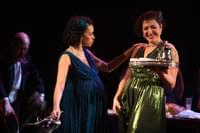
I don’t know about you, but I won’t look at a costume on our stage the same again without thinking about the amazing people working behind the scenes of every show just offstage, knowing that the amazing cutter Karen looked at our designers 2D illustration and turned it into the costumes you see before you and all the maintenance and thought that goes into making every garment – even the details that you can’t see as an audience.
Thank you so much for taking time out of your busy day to talk to us Caitlin, I can’t wait to see the Macbeth (an undoing) costumes in the new year.
